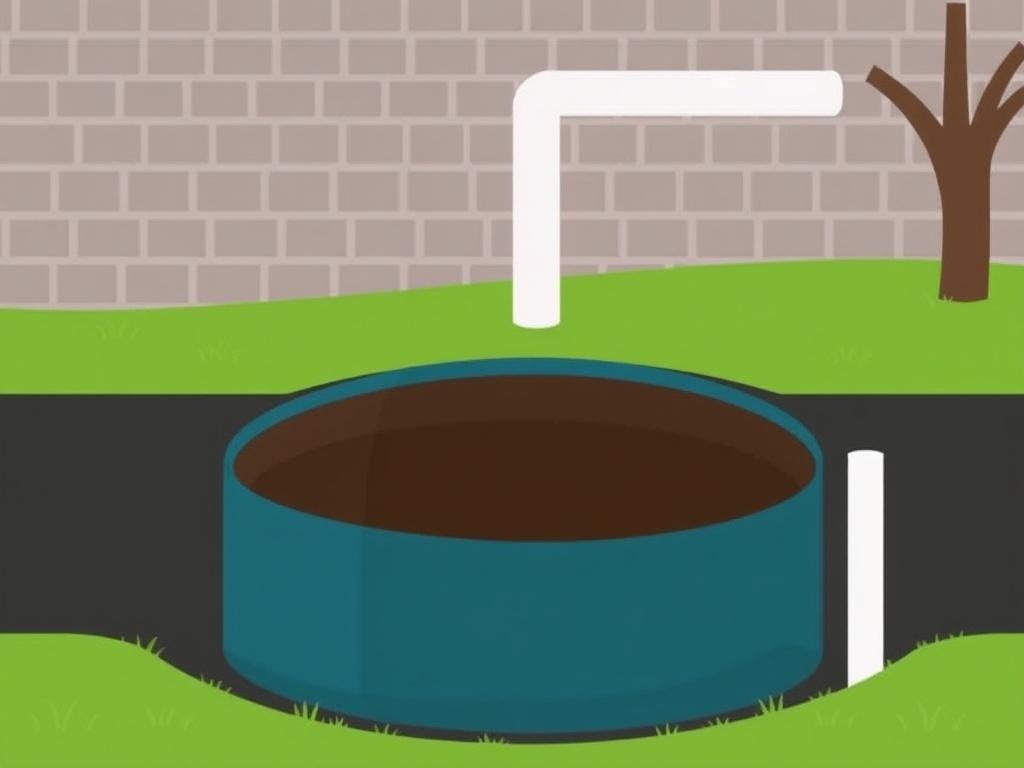Septic tanks are a crucial part of many homes, especially those in rural or suburban areas where municipal sewage systems are not available. They manage and treat household wastewater, ensuring that your home remains sanitary and safe. But like any system, septic tanks require regular monitoring and maintenance. One of the most common questions homeowners ask is, “How to tell if your septic tank is full?” Recognizing the signs a septic tank is full can prevent costly repairs, unpleasant odors, and environmental hazards. In this article, we’ll guide you through everything you need to know about septic tanks, the warning signs of a full tank, and what actions to take to keep your system running smoothly.
- Understanding the Purpose and Function of a Septic Tank
- Why a Septic Tank Becomes Full
- Key Signs and Symptoms of a Full Septic Tank
- 1. Slow Drains in Your Home
- 2. Gurgling Sounds in Plumbing
- 3. Strong Odors Around Your Property
- 4. Standing Water or Wet Spots in the Yard
- 5. Sewage Backup in the Home
- How to Inspect Your Septic Tank for Fullness
- Step-by-Step Septic Tank Inspection
- Interpreting Inspection Results
- How to Prevent Your Septic Tank from Getting Full Quickly
- Proper Waste Disposal
- Water Conservation Techniques
- Regular Pumping Schedule
- When to Call a Professional Septic Tank Service
- What to Expect from Septic Pumping
- Common Misconceptions about Septic Tanks
- Myth 1: Septic Tanks Last Forever Without Maintenance
- Myth 2: Additives Can Replace Pumping
- Myth 3: All Tank Problems Are the Same
- Summary Table: Signs That Your Septic Tank Is Full
- Additional Tips to Extend the Life of Your Septic System
- How to Choose a Reliable Septic Service Provider
- Common Questions about Septic Tank Fullness
- How long does it take for a septic tank to get full?
- Can I safely open my septic tank lid?
- What happens if I don’t pump my septic tank?
- Are there any DIY methods to check if the septic tank is full?
- Environmental Importance of Maintaining Your Septic Tank
- How Septic Tank Failures Affect the Environment
- Final Thoughts on How to Tell If Your Septic Tank Is Full
- Conclusion
Understanding the Purpose and Function of a Septic Tank

Before diving into the signs of a full septic tank, it’s helpful to understand what a septic tank does. A septic system treats wastewater from your home by allowing solids to settle and decompose, then disperses the treated water safely into the ground. Typically, the tank consists of a large underground container with compartments that separate solids from liquids.
Wastewater flows from your home’s plumbing into the septic tank, where heavy solids sink to the bottom, forming sludge, and lighter materials like oils float to the surface, creating a scum layer. The middle layer, mostly liquid, exits the tank into the drain field for further treatment. When the tank is functioning correctly, it keeps this process balanced.
Why a Septic Tank Becomes Full
Septic tanks do not absorb waste; rather, they store solids for decomposition over time. Eventually, these solids build up and fill the tank with sludge and scum. When unpumped, this buildup causes the system to malfunction, leading to blockages, backups, and even contamination of the surrounding environment.
How often your septic tank needs to be pumped depends on several factors:
- Tank size
- Household size
- Water usage habits
- Presence of garbage disposals
- Type of wastewater generated
A typical septic tank should be pumped every 3 to 5 years, but this can vary widely based on the above factors.
Key Signs and Symptoms of a Full Septic Tank
Knowing how to tell if your septic tank is full can save you money and avoid health risks. There are several warning signs that your septic system may be near or at capacity:
1. Slow Drains in Your Home
One of the first indicators of septic trouble is slow drainage in sinks, showers, and tubs. When the tank is full, wastewater cannot flow through efficiently, causing water to back up into your home. This slowdown can affect one or multiple fixtures and often becomes more noticeable over time.
2. Gurgling Sounds in Plumbing
Have you ever heard a gurgling noise when flushing the toilet or draining water? This could be a sign that your septic tank is full or partially clogged. Gurgling occurs as trapped air or sewage struggles to pass through the system.
3. Strong Odors Around Your Property
A full septic tank can emit unpleasant sewage smells around your home, particularly near the tank or drain field. These odors arise from gases produced by decomposing waste or potential leaks. If you notice a persistent bad smell outside, it’s time to investigate.
4. Standing Water or Wet Spots in the Yard
Your septic system relies on the drain field to absorb wastewater. When the tank is overloaded, it can cause water to pool or create soggy spots on the lawn above or near the drain field. These wet areas often remain after rainfall and can indicate system failure.
5. Sewage Backup in the Home
The most alarming sign of a full septic tank is sewage backing up inside your home. This may appear as wastewater rising in drains or toilets, and it requires immediate attention to prevent health hazards.
How to Inspect Your Septic Tank for Fullness
While some signs are visible, the most accurate way to tell if your septic tank is full involves inspection.
Step-by-Step Septic Tank Inspection
| Step | Description | Tools Needed |
|---|---|---|
| 1. Locate the Septic Tank | Identify the tank’s access point, usually marked on your property or found in your septic system paperwork. | Shovel, gloves |
| 2. Open the Manhole or Lid | Carefully remove the septic tank cover, which may be recessed below ground level. | Pry bar, gloves |
| 3. Use a Sludge Judge or Inspection Tool | Insert the sludge judge (a long pole with a clear tube) to measure the levels of sludge and scum. | Sludge judge tool |
| 4. Record the Measurements | Check the depth of sludge at the bottom and scum at the top to determine if pumping is needed. | Notebook or phone for notes |
| 5. Close the Tank Lid Securely | Replace and secure the lid to prevent injury or contamination. | Safety equipment |
Interpreting Inspection Results
Experts recommend that if the sludge layer is more than 25% of the tank’s total liquid depth, it’s time to pump. Similarly, if the scum layer is too thick and approaching the outlet pipe, the tank needs attention. Regular inspections help catch issues early.
How to Prevent Your Septic Tank from Getting Full Quickly
Prevention is better than cure. By adopting careful habits and regular maintenance, you can prolong the life of your septic system and avoid the headache of a full tank.
Proper Waste Disposal
Septic tanks are not trash cans. Avoid flushing or draining the following items:
- Grease, fats, and oils
- Sanitary products (pads, tampons)
- Disposable wipes or paper towels
- Harsh chemicals like bleach or paints
- Medications
These substances can damage bacteria essential for waste breakdown or cause blockages.
Water Conservation Techniques
Overloading your septic tank with excessive water changes the balance and may cause it to fill faster. Conserve water by:
- Fixing leaks promptly
- Using efficient appliances
- Spreading out laundry loads
This reduces the speed at which the tank fills.
Regular Pumping Schedule
Following a routine septic tank pumping schedule is the most effective way to keep your tank from getting full. Contact professionals every 3 to 5 years or based on your usage.
When to Call a Professional Septic Tank Service
While some steps in maintaining and inspecting your septic tank you can do, certain tasks should be left to experts. Calling a professional becomes necessary when:
- You notice persistent drainage issues or odors
- A septic inspection shows your tank is full
- You see signs of drain field failure such as soggy spots
- You need your septic tank pumped
Licensed septic service companies have the tools, experience, and certifications to safely handle septic tanks while adhering to local regulations.
What to Expect from Septic Pumping
During pumping, the technician pumps out the sludge and scum layers, leaving the tank cleaned but not emptied of liquid. After pumping, a quick inspection is often performed to note any damage or concerns such as cracks or corrosion.
Common Misconceptions about Septic Tanks
There are several myths homeowners believe about septic tanks that can lead to neglect or improper use.
Myth 1: Septic Tanks Last Forever Without Maintenance
Truth: Like any home system, septic tanks require periodic service. Ignoring maintenance can lead to costly emergencies.
Myth 2: Additives Can Replace Pumping
Truth: While additives claim to break down solids, no product replaces the need for professional tank pumping.
Myth 3: All Tank Problems Are the Same
Truth: Drain field issues, blockages, and full tanks can cause similar symptoms but require different solutions.
Summary Table: Signs That Your Septic Tank Is Full
| Sign | Description | Action Needed |
|---|---|---|
| Slow drains | Water takes longer to drain from fixtures | Inspect plumbing and septic tank |
| Gurgling sounds | Unusual noises during flushing or draining | Consider septic inspection |
| Foul odors | Persistent sewage smell near tank or yard | Check for leaks; call septic service |
| Wet spots in yard | Unexplained soggy patches above drain field | Evaluate septic system drainage |
| Sewage backup | Wastewater rising in household drains | Immediate professional intervention |
Additional Tips to Extend the Life of Your Septic System
Beyond watching for signs of a full tank, you can enhance your system’s longevity by:
- Avoiding driving or parking vehicles over the drain field
- Planting only grass above the drain field to prevent root damage
- Regularly inspecting and maintaining plumbing fixtures
- Keeping records of pumping and inspections
These simple actions help protect the septic system and your investment in your home.
How to Choose a Reliable Septic Service Provider
Finding a trustworthy septic professional ensures the job is done right. Look for:
- Licensing and certifications
- Positive customer reviews
- Transparent pricing and detailed estimates
- Experience with your local regulations
You can ask neighbors or check online directories for recommendations.
Common Questions about Septic Tank Fullness
How long does it take for a septic tank to get full?
This varies but generally ranges from 3 to 5 years depending on usage and tank size.
Can I safely open my septic tank lid?
It’s possible but not recommended without proper knowledge and safety equipment due to toxic gases.
What happens if I don’t pump my septic tank?
The tank will overflow, risking backups, system damage, water contamination, and costly repairs.
Are there any DIY methods to check if the septic tank is full?
Besides monitoring signs like slow drains and odors, some homeowners use a sludge judge tool to measure levels, but professional inspections are best.
Environmental Importance of Maintaining Your Septic Tank
A full, malfunctioning septic tank can pollute groundwater and nearby water bodies, posing risks to wildlife and human health. Protecting your septic system isn’t just about convenience; it’s about safeguarding the environment around your home.
How Septic Tank Failures Affect the Environment
When untreated waste escapes into soil or water:
- Pathogens contaminate drinking water sources
- Excess nutrients cause algae blooms
- Local ecosystems suffer damage
Responsible septic maintenance is part of being a conscientious homeowner.
Final Thoughts on How to Tell If Your Septic Tank Is Full

Regular attention to your septic system can prevent many problems associated with a full tank. Knowing the signs like slow drains, gurgling noises, odors, wet spots, and backups will alert you before the damage escalates. Routine inspections and pumping, combined with sensible water use and waste disposal habits, will keep your septic system healthy and protect your home’s plumbing and the environment.
Conclusion

Understanding how to tell if your septic tank is full is essential for every homeowner relying on this underground waste management system. Paying attention to signs such as slow drainage, unusual sounds, odors, wet patches, and backups will guide you toward timely inspection and maintenance. Regular pumping, proper waste disposal, and water conservation not only extend the life of your system but also protect your property and the environment from potentially harmful consequences. While some checks you can perform yourself, professional septic service is invaluable for thorough inspections and routine pumping, helping you avoid expensive repairs in the long run. By staying informed and proactive, you can keep your septic system functioning smoothly and enjoy peace of mind in your home.
Помогла вам статья?






